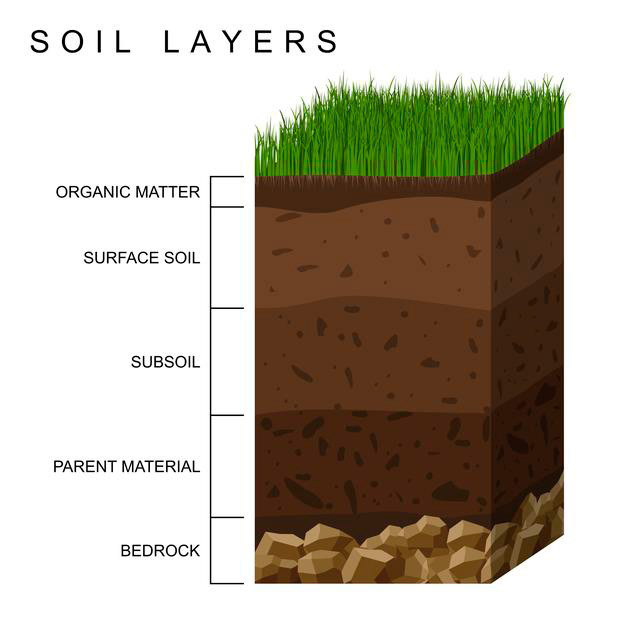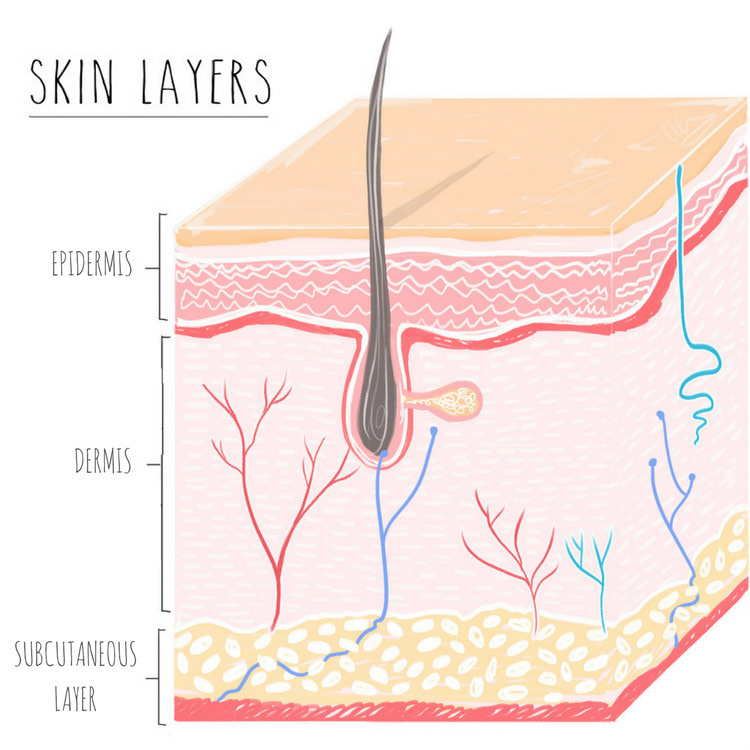The first thing that comes to mind when I tried to relate topsoil to skin was: topsoil is the skin of our planet. Some key words when I was brainstorming: environment, sustainability, layers, structure, organic/inorganic matter, erosion, diversity, land, home, immigration. And I realized, wow this topic could be so broad -- both scientific /biological and quite sentimental, with different approaches.
Then I dig into the research phase. I recognized the similarity between the composition of human skin layers and soil layers. (see below 2 images) Since I'm not a biology expert, I wonder if I should continue with this scientific approach. But I decided to do more research to gain a better understanding.


More research on soil formation, function, composition, classification, layers, and conservation.
Key Insights:
- A single spade full of rich soil can contain more species of organisms than can be found in the entire Amazon rain forest! In fact, the International Union of Soil Sciences refers to soil as the “Earth's living skin,” saying that the majority of the Earth's diversity is in the soil, not above ground.
- Soil is considered a nonrenewable resource because it takes between 100 to 600 years or more to “grow” an inch of topsoil – the most productive soil layer.
- Five factors contribute to the formation of soil: bedrock, climate, topography, living organisms, and time.
- Topsoil: 0''-12', is the uppermost and most productive soil layer. Farmers plant their crops in this layer of soil. Plants with branching root systems, such as wheat, grain sorghum, and corn, depend on the topsoil for moisture and nutrients.
- Topsoil is the soil layer most impacted by conditions on the Earth's surface as soil particles can erode, becoming detached and moving with water, wind, ice, or gravity. When erosion occurs, the detached particles carry away nutrients needed by plants.
- Three general principles guide soil and water conservation practices: changing the surface of the soil to increase the ability of water to penetrate gradually into the soil layers, slowing down the movement of water along the top of the soil to give the water more time to soak into the soil, and managing crops to take advantage of natural precipitation patterns.
Some ideas came up regarding the direction of my guide:
Innovate and maintain our soil, the fragile skin from which biodiversity springs. To take care or protect it as we do with our own skin.
- Role of the soil and what practices are harming it (causes of erosion)
- Challenges to maintaining healthy soil, or preventing erosion/degradation
- Impacts of degradation, how can we restore and build our soil
References:
https://www.dcmakesiteasy.com/what-kind-of-soil-should-i-use-and-whats-the-difference-between-soil-and-dirt/
https://www.dermstore.com/blog/layers-and-functions-of-skin/
https://cdn.agclassroom.org/ks/resource/guides/plants/02soil.pdf
https://www.worldwildlife.org/threats/soil-erosion-and-degradation
https://www.terreplenish.com/post/soil-the-skin-of-our-planet